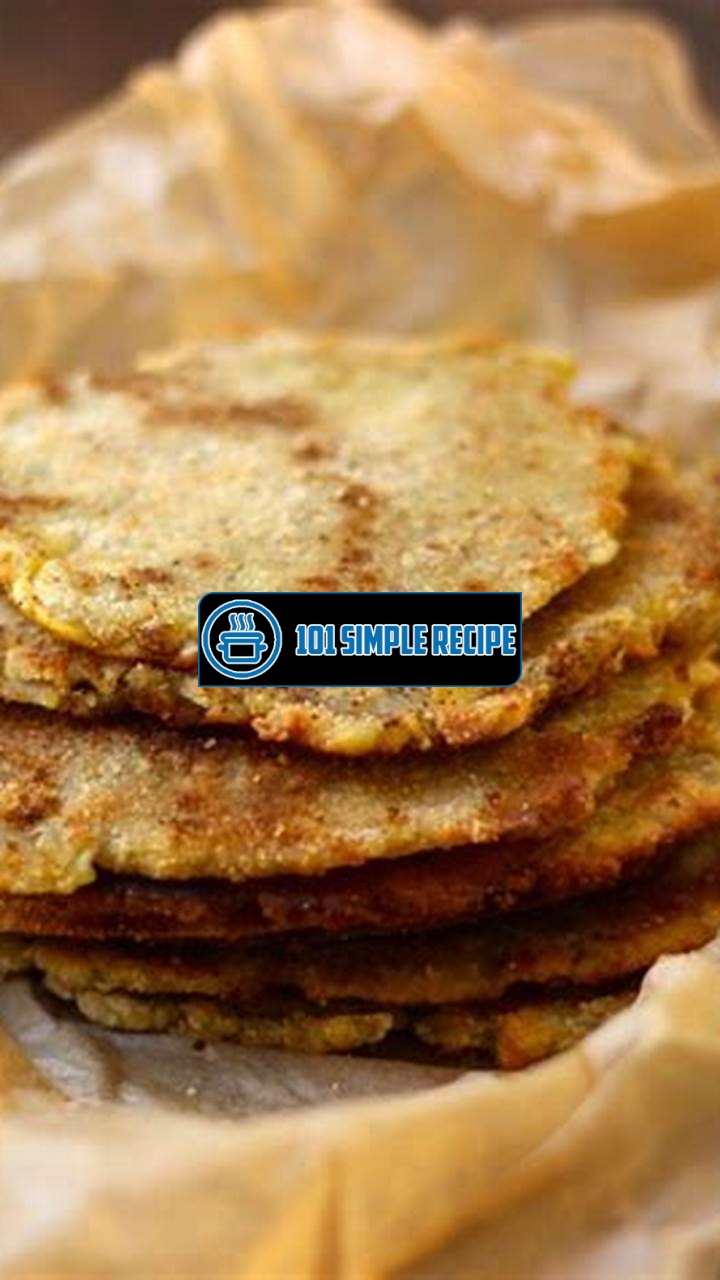Welcome to the delicious world of AIP flatbread recipes! If you’re looking for tasty ways to follow a healthy diet, you’ve come to the right place. In this article, we will explore a variety of mouthwatering flatbread recipes that are compliant with the Autoimmune Protocol (AIP), a dietary approach that focuses on eliminating potential inflammatory foods to support overall health and well-being. Whether you have dietary restrictions, food sensitivities, or simply want to try something new, these AIP flatbread recipes are sure to tickle your taste buds and provide a nourishing addition to your mealtime. So grab your apron and let’s get cooking!

Understanding AIP Flatbread Recipes
Discover the ins and outs of AIP flatbread recipes and how they can fit into your autoimmune protocol diet.
What is AIP?
AIP stands for Autoimmune Protocol, which is a dietary protocol designed to support individuals with autoimmune conditions. It focuses on eliminating potentially inflammatory foods and incorporating nutrient-dense ingredients to promote healing and reduce symptoms.
Following the AIP can be challenging, but with the right recipes and substitutions, you can still enjoy delicious meals. AIP flatbread recipes are a great option for those looking for a bread substitute that fits within the guidelines of the protocol. These recipes eliminate grains, gluten, dairy, and other common allergens, making them suitable for individuals with various dietary restrictions.
By using alternative flours and ingredients, AIP flatbread recipes offer a satisfying and flavorful option for those following the autoimmune protocol. These recipes often utilize ingredients like cassava flour, coconut flour, arrowroot powder, and gelatin to create a bread-like texture without triggering inflammation or digestive issues.
One of the key benefits of AIP flatbread recipes is that they are versatile and can be used in various dishes. From pizzas and wraps to sandwiches and appetizers, these flatbreads provide a sturdy base for a range of flavors and toppings. They are a great addition to your autoimmune protocol diet, allowing you to enjoy your favorite dishes while still adhering to the restrictions of the AIP.
The Benefits of AIP Flatbread Recipes
There are several benefits to incorporating AIP flatbread recipes into your diet. Here are a few:
- Eliminates common allergens: AIP flatbread recipes are free from grains, gluten, dairy, and other common allergens, making them suitable for individuals with food sensitivities or allergies.
- Promotes gut health: By using alternative flours and incorporating nutrient-dense ingredients, AIP flatbread recipes can support gut health and promote a balanced microbiome.
- Supports the autoimmune protocol: AIP flatbread recipes allow individuals following the autoimmune protocol to enjoy bread-like options without compromising their dietary restrictions.
- Increases nutrient intake: AIP flatbread recipes often include ingredients rich in vitamins, minerals, and antioxidants, providing a nutrient-dense alternative to traditional bread.
- Offers versatility: AIP flatbread recipes can be used in various dishes, allowing you to explore different flavors and cuisines while still adhering to the AIP.
Overall, incorporating AIP flatbread recipes into your autoimmune protocol diet can enhance your culinary experience while supporting your overall health and wellness.
Substitutes for Traditional Ingredients
When creating AIP flatbread recipes, it’s important to find suitable substitutes for traditional ingredients. Here are some common substitutions:
| Traditional Ingredient | AIP Substitute |
|---|---|
| All-Purpose Flour | Cassava Flour, Coconut Flour |
| Yeast | Gelatin |
| Milk/Dairy | Coconut Milk, Nut Milk |
| Eggs | Ground Flaxseed, Gelatin |
These substitutions allow for the creation of AIP-friendly flatbread recipes while still maintaining the desired texture and flavor. Experimenting with different ingredients can lead to delicious results that align with the autoimmune protocol.
Note: Always check for individual sensitivities and allergies to ensure the suitability of these substitutions.
By understanding AIP flatbread recipes, their benefits, and the substitutions available, you can confidently incorporate these delicious creations into your autoimmune protocol diet. Enjoy the flavors and versatility without compromising your health goals!
If you’re craving a savory flatbread, you’ll love this cauliflower flatbread. It’s packed with flavor and AIP-compliant.
Choosing the Right Ingredients
When it comes to creating delicious and healthy AIP flatbread recipes, choosing the right ingredients is essential. By selecting high-quality and AIP-approved ingredients, you can ensure that your flatbread is not only flavorful but also supports your dietary needs. Let’s explore the key components of AIP flatbread recipes and learn about the essential ingredients to include.
AIP-Approved Flour Alternatives
One of the most important factors in making AIP flatbread is choosing the right flour alternative. The Autoimmune Protocol (AIP) diet restricts the consumption of grains, which eliminates traditional wheat and all-purpose flours. However, there are numerous AIP-approved flour alternatives available that can still provide a satisfying texture and taste.
Some popular AIP-approved flour alternatives for making flatbread include:
- Tigernut flour: Rich in fiber and nutrients, tigernut flour is a great choice for AIP flatbread. Its slightly sweet and nutty flavor adds depth to your recipes.
- Coconut flour: Made from ground coconut meat, coconut flour is a versatile and widely used AIP flour alternative. It adds a pleasant tropical flavor to your flatbread.
- Arrowroot flour: Derived from tropical plants, arrowroot flour is a starchy and gluten-free option. It helps bind the ingredients together and gives your flatbread a light and fluffy texture.
Nutritional Supplements and Additives
Incorporating nutritional supplements and additives into your AIP flatbread recipes can enhance their nutritional value and taste. While it’s always best to consult with a healthcare professional before adding any supplements to your diet, there are a few common options that can be beneficial.
AIP-friendly nutritional supplements and additives include:
- Collagen powder: Known for its many health benefits, collagen powder can be added to your flatbread recipes for a boost of protein and to support joint and gut health.
- Turmeric: This vibrant spice not only adds a golden hue to your flatbread but also provides anti-inflammatory properties.
- Sea salt: Enhance the flavor of your AIP flatbread with mineral-rich sea salt, which can help balance the taste of other ingredients.
Optimal Cooking Fats
Selecting the right cooking fats plays a crucial role in achieving the perfect texture and taste for your AIP flatbread. As butter, vegetable oils, and other processed fats are typically avoided on the AIP diet, it’s important to opt for healthier alternatives.
Some optimal cooking fats for AIP flatbread recipes include:
- Avocado oil: With its high smoke point and mild flavor, avocado oil is an ideal choice for cooking flatbread at high temperatures.
- Coconut oil: Known for its tropical aroma and taste, coconut oil adds richness and moisture to your flatbread.
- Olive oil: Full of heart-healthy monounsaturated fats, olive oil brings a light and delicate flavor to your AIP flatbread.
By carefully selecting AIP-approved flour alternatives, incorporating nutritious supplements and additives, and using optimal cooking fats, you can create delicious and wholesome flatbread that adheres to your dietary needs. Enjoy experimenting with different flavors and ingredients to find your favorite AIP flatbread recipes!
Preparing the Perfect AIP Flatbread
Master the techniques for creating delicious flatbreads that adhere to AIP guidelines.
Mixing and Kneading the Dough
When it comes to preparing AIP flatbread, one of the most crucial steps is mixing and kneading the dough. This process ensures that all the ingredients are thoroughly combined and that the dough develops the right texture and elasticity.
Start by gathering all the necessary ingredients, such as AIP-approved flours like cassava or tigernut, along with other ingredients like tapioca starch, coconut milk, and eggs. In a mixing bowl, combine the dry ingredients, and then slowly add the wet ingredients while continuously stirring.
Mixing tip: To ensure even distribution of ingredients, use a whisk or fork to combine the dry ingredients first before adding the wet ingredients.
Kneading tip: Once the dough starts to come together, transfer it to a clean and floured surface. Knead the dough for about 5-7 minutes until it becomes smooth and elastic. This step helps to activate the gluten-like properties of certain AIP flours, resulting in a more pliable dough.
Rolling and Shaping Techniques
After the dough is mixed and kneaded, it’s time to roll and shape it into flatbreads. This step is essential for achieving the desired thickness and shape of the flatbread.
Rolling tip: Dust your work surface and rolling pin with tapioca starch to prevent sticking. Divide the dough into smaller portions and roll each portion into a ball. Flatten the dough ball with your hands and use the rolling pin to roll it out into a thin, even circle or rectangle.
Shaping tip: If you prefer a round flatbread, use a cookie cutter or a round bowl to cut out circles from the rolled-out dough. For a rectangle or square shape, use a sharp knife to trim the edges and create straight lines.
Cooking Methods for Best Results
The cooking method you choose plays a significant role in the taste and texture of your AIP flatbread. Here are two popular cooking methods recommended for the best results:
- Baking: Preheat your oven to the specified temperature in the recipe. Place the shaped flatbread on a baking sheet lined with parchment paper and bake for the recommended time. This method produces flatbreads with a crisp exterior and a soft interior.
- Stovetop: Heat a non-stick skillet or griddle over medium heat. Cook the shaped flatbread on the hot surface, flipping once, until both sides are golden brown. This method gives the flatbread a slightly charred and chewy texture.
Note: Experiment with cooking times and temperatures to achieve your desired level of crispness and chewiness.
With these tips and techniques, you can confidently prepare delicious AIP flatbread that fully complies with the diet guidelines. Whether you choose to bake or cook on the stovetop, remember to adapt the recipes based on your personal preferences and dietary needs. Enjoy your homemade AIP flatbread with various toppings or as a side dish to accompany your favorite meals.
Creative AIP Flatbread Variations
Are you tired of the same old AIP flatbread recipes? Want to add a creative twist to your healthy diet? Look no further! In this article, we will explore innovative variations of traditional flatbread recipes that are AIP-friendly. Whether you are a fan of zucchini or cauliflower, love herb and spice-infused flavors, or prefer savory or sweet fillings, we have got you covered!
Zucchini or Cauliflower Flatbread
Are you looking for a low-carb alternative to regular flatbread? Zucchini or cauliflower flatbread is the answer! These unique variations not only provide delicious taste but also ensure you stick to your AIP diet. Zucchini or cauliflower is finely grated and mixed with other ingredients such as coconut flour, arrowroot powder, and eggs. The mixture is then pressed into thin rounds or squares and baked until golden brown. The result? A light, crispy, and flavorful flatbread that can be used as a base for your favorite toppings.
Try topping your zucchini or cauliflower flatbread with AIP-friendly ingredients such as avocado, smoked salmon, or grilled chicken. The possibilities are endless, and you can get creative with your flavor combinations. Remember to season your toppings with AIP-approved herbs and spices to enhance the taste and add a burst of flavor.
Herb and Spice-infused Flatbread
Add an extra kick to your flatbread by infusing it with herbs and spices! AIP-approved herbs and spices not only provide flavor but also have numerous health benefits. You can experiment with different combinations such as rosemary and thyme, basil and oregano, or garlic and turmeric. Simply mix the herbs and spices into the flatbread dough before baking, and enjoy the aromatic flavors that fill your kitchen.
Herb and spice-infused flatbread can be enjoyed on its own or paired with AIP-friendly dips such as guacamole or hummus. The combination of the flavorful flatbread and the creamy dip creates a taste sensation that will leave you wanting more!
Savory or Sweet Filling Options
When it comes to flatbread, the filling options are endless. Whether you prefer savory or sweet flavors, there is a flatbread filling for you. For a savory option, try topping your flatbread with AIP-friendly ingredients such as grilled vegetables, roasted chicken, or dairy-free pesto. These fillings not only add taste but also provide essential nutrients to support your healthy diet.
If you have a sweet tooth, don’t worry! You can still enjoy delicious flatbread with AIP-approved sweet fillings. Spread some almond butter or coconut cream on your flatbread and top it with fresh berries or sliced bananas. The combination of the sweet filling and the slightly savory flatbread creates a satisfying and guilt-free dessert.
In conclusion, these creative AIP flatbread variations are a great way to add variety to your healthy diet. Whether you choose zucchini or cauliflower flatbread, herb and spice-infused flatbread, or savory or sweet fillings, you are sure to enjoy the delicious flavors while sticking to your AIP guidelines. So go ahead and get creative in the kitchen – your taste buds will thank you!
For a refreshing twist, try making this coconut flour flatbread. It’s gluten-free and AIP-friendly, perfect for your next meal.
Pairing AIP Flatbreads with Nutritious Dips and Toppings
When it comes to enhancing the taste and nutritional value of your AIP flatbreads, the possibilities are endless. By pairing them with complementary dips and toppings, you can elevate your meal and satisfy your taste buds. Whether you’re following the Autoimmune Protocol (AIP) or simply looking for healthier alternatives, these delicious ideas will add flavor and nourishment to your diet.
Gut-Healing Avocado Dip with Fresh Herbs
An avocado dip with fresh herbs is a perfect accompaniment to your AIP flatbreads. Avocados are rich in healthy fats that provide essential nourishment for your body. They are also known for their gut-healing properties and can help reduce inflammation. You can make this dip by mashing ripe avocados and adding a squeeze of lemon juice, fresh herbs like basil or cilantro, and a pinch of sea salt for added flavor. The creamy texture and vibrant flavors of this dip will complement your AIP flatbreads beautifully.
Protein-Packed Chicken Salad Topping
If you’re looking to add a protein boost to your AIP flatbreads, a chicken salad topping is a fantastic choice. Grilled or roasted chicken breast provides lean protein and essential amino acids that support muscle growth and repair. To make this topping, simply cook chicken breast and dice it into small pieces. Mix it with AIP-friendly mayonnaise, diced celery, and a sprinkle of fresh herbs like parsley or dill. The combination of tender chicken, crisp vegetables, and creamy dressing will add a delightful crunch to your flatbreads.
Antioxidant-Rich Roasted Vegetable Spread
Roasted vegetables offer a burst of flavor and a wealth of antioxidants that promote overall health. By turning them into a spread, you can transform your AIP flatbreads into a nutritious and satisfying meal. To make this spread, roast a variety of vegetables like bell peppers, zucchini, and eggplant until they are tender and slightly caramelized. Then, blend them in a food processor until you achieve a smooth consistency. You can add extra herbs and spices like garlic or basil for an extra kick of flavor. The natural sweetness and complexity of this vegetable spread will take your AIP flatbreads to the next level.
By exploring these delicious AIP flatbread recipes, you can create a healthy and flavorful diet that supports your overall well-being. Whether you choose the gut-healing avocado dip, the protein-packed chicken salad topping, or the antioxidant-rich roasted vegetable spread, each option provides an array of nutrients and flavors that will tantalize your taste buds. So, grab your AIP flatbreads and start experimenting with these nutritious dips and toppings today!
If you’re looking for more delicious AIP recipes, check out this AIP flatbread recipe. It’s a great option for those following the autoimmune protocol.
Frequently Asked Questions
Thank you for taking the time to read our article on AIP flatbread recipes! We hope you found it informative and inspiring. If you have any more questions or need further assistance, please feel free to reach out to us. We value your feedback and would love to hear from you. Keep visiting our website for more exciting recipes and tips on maintaining a healthy lifestyle. Happy cooking!
| No. | Questions | Answers |
|---|---|---|
| 1. | Can I use a different flour instead of cassava flour? | Unfortunately, this recipe specifically calls for cassava flour to achieve the desired texture and flavor. Using a different flour may alter the results significantly. However, you can experiment with other AIP-friendly flours to find a suitable alternative. |
| 2. | Can I freeze the flatbread? | Yes, you can freeze the flatbread! Simply wrap it tightly in plastic wrap or place it in an airtight container before storing it in the freezer. When you’re ready to enjoy it, thaw it at room temperature or warm it up in a skillet. It should stay fresh for up to 3 months in the freezer. |
| 3. | Can I customize the toppings? | Absolutely! Feel free to get creative with the toppings. You can add your favorite AIP-friendly vegetables, herbs, or even protein sources like chicken or shrimp. Just make sure to adjust the cooking time accordingly to ensure everything is cooked through. |
| 4. | Are these flatbreads suitable for people with gluten allergies? | Yes! These AIP flatbreads are gluten-free, making them a great option for people with gluten allergies or sensitivities. The use of cassava flour as a substitute for traditional wheat flour ensures that the flatbreads are free from gluten. |
| 5. | Can I make these flatbreads in advance? | Definitely! These flatbreads can be made in advance and stored in an airtight container at room temperature for up to 2 days. You can reheat them in a toaster or warm them up in a skillet before serving to restore their freshness and texture. |
| 6. | Can I substitute coconut milk with another non-dairy milk? | Yes, you can substitute coconut milk with another non-dairy milk of your choice, such as almond milk or cashew milk. Just make sure the consistency of the milk is similar to coconut milk to maintain the desired texture of the flatbread. |
Thank You for Reading!
Thank you for reading our article on AIP flatbread recipes. We hope you found inspiration in these delicious and healthy recipes. Feel free to visit our website again for more exciting recipes and tips on following the AIP diet. Don’t forget to share your creations with us and let us know how these recipes worked for you. Until next time, happy cooking and enjoy your AIP flatbread adventures!
Jump to Recipe
AIP Flatbread Recipe

Delicious and healthy AIP flatbread recipes made with cassava flour and AIP-friendly ingredients. These flatbreads are gluten-free, paleo-friendly, and perfect for anyone following the AIP diet.
- 1 cup cassava flour
- 1/4 teaspoon sea salt
- 1/2 teaspoon baking soda
- 1/2 cup coconut milk
- 2 tablespoons olive oil
- 1 tablespoon apple cider vinegar
- 1/4 cup water (if needed)
- In a mixing bowl, combine the cassava flour, sea salt, and baking soda.
- Add the coconut milk, olive oil, and apple cider vinegar to the dry ingredients. Mix well until a dough forms. If the dough is too dry, add water as needed.
- Divide the dough into 4 equal portions. Roll out each portion into a thin round flatbread.
- Heat a skillet over medium heat. Cook each flatbread for 2-3 minutes on each side, or until lightly browned and cooked through.
- Serve the flatbreads warm. They can be enjoyed on their own or used as a base for various toppings and fillings.






